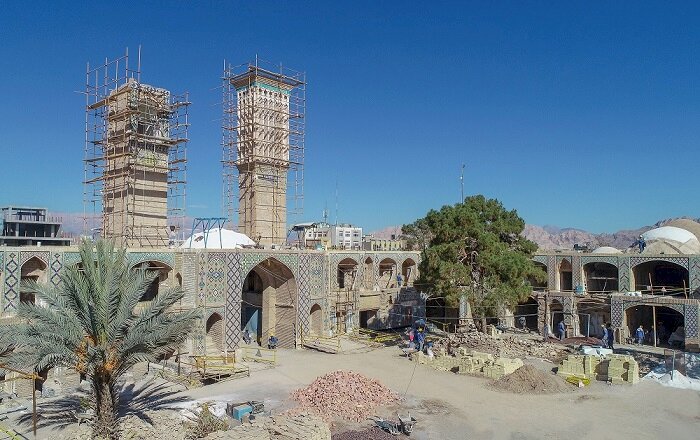Centuries-old caravanserai in Kerman to be turned into boutique hotel

TEHRAN – The Qajar-era (1789-1925) Vakil Caravanserai in the southern province of Kerman is planned to be turned into a boutique hotel after being fully restored.
Restoration work of the historical structure is complete by 90 percent and it will come on stream as a boutique hotel by the end of the current Iranian year 1400 (ends March 21, 2022), the provincial tourism chief has said.
The project is being carried out in close collaboration with the private sector, Fereydoun Fa’ali said on Tuesday.
For the restoration project, the initial funding was 100 billion rials (about $2.4 million at the official exchange rate of 42,000 rials per dollar), but the fund has grown in the implementation phase, the official added.
Cultural heritage experts supervise the project, and efforts are being made to preserve its historical and cultural identity as well as its originality, he mentioned.
With some 60 rooms, the hotel will add over 140 beds to the hospitality sector of the province, moreover, some 150 job opportunities are also expected to be created upon the project’s completion, he noted.
Tourists can stay and visit this caravanserai since it is located in the historical texture of Kerman and is close to many historical monuments, including the Bazaar and Ganjali Khan Complex, he said.
Caravansary (also Caravanserai or Caravansaray) is a building that served as the inn of the Orient, providing accommodation for commercial, pilgrim, postal, and especially official travelers.
According to Encyclopedia Iranica, from the number of surviving caravansaries and their sizes, it is clear that in Safavid and Qajar times there was a state architectural department that was specifically concerned with the construction of caravansaries and stations on the overland routes. Furthermore, in the cities, several caravansaries were erected as lodging houses, depots, and commercial offices in the vicinity of the bazaars.
A typical caravansary consists of a square or rectangular plan centered around a courtyard with only one entrance and arrangements for defense if necessary. Whether fortified or not, it at least provided security against beasts of prey and attacks by brigands.
Iran’s earliest caravanserais were built during the Achaemenid era (550 -330 BC). Centuries later, when Shah Abbas I assumed power from 1588 – to 1629, he ordered the construction of network caravanserais across the country. For many travelers to Iran, staying in or even visiting a centuries-old caravanserai, can be a wide experience; they have an opportunity to feel the past, a time travel back into a forgotten age!
Big and sprawling Kerman province is something of a cultural melting pot, blending various regional cultures over time. It is also home to rich tourist spots and historical sites including bazaars, mosques, caravanserais, and ruins of ancient urban areas.
Kerman province is bounded by the provinces of Fars on the west, Yazd on the north, South Khorasan on the northeast, Sistan-Baluchestan on the east, and Hormozgan on the south. It includes the southern part of the central Iranian desert, the Dasht-e Lut.
ABU/AFM

Leave a Comment